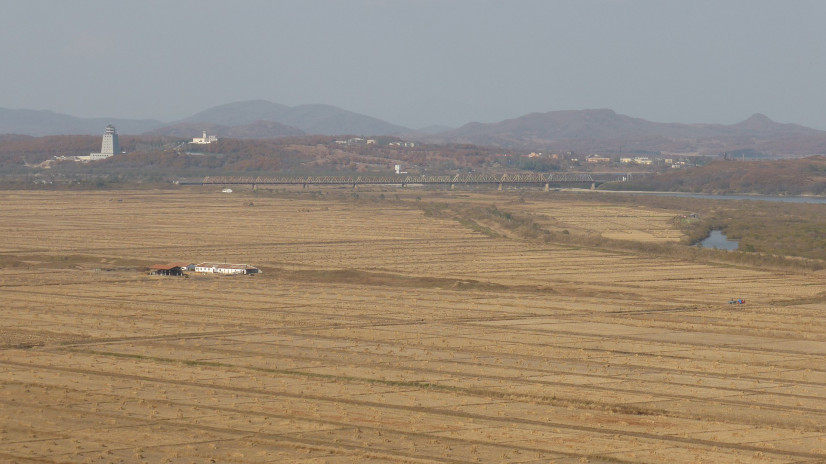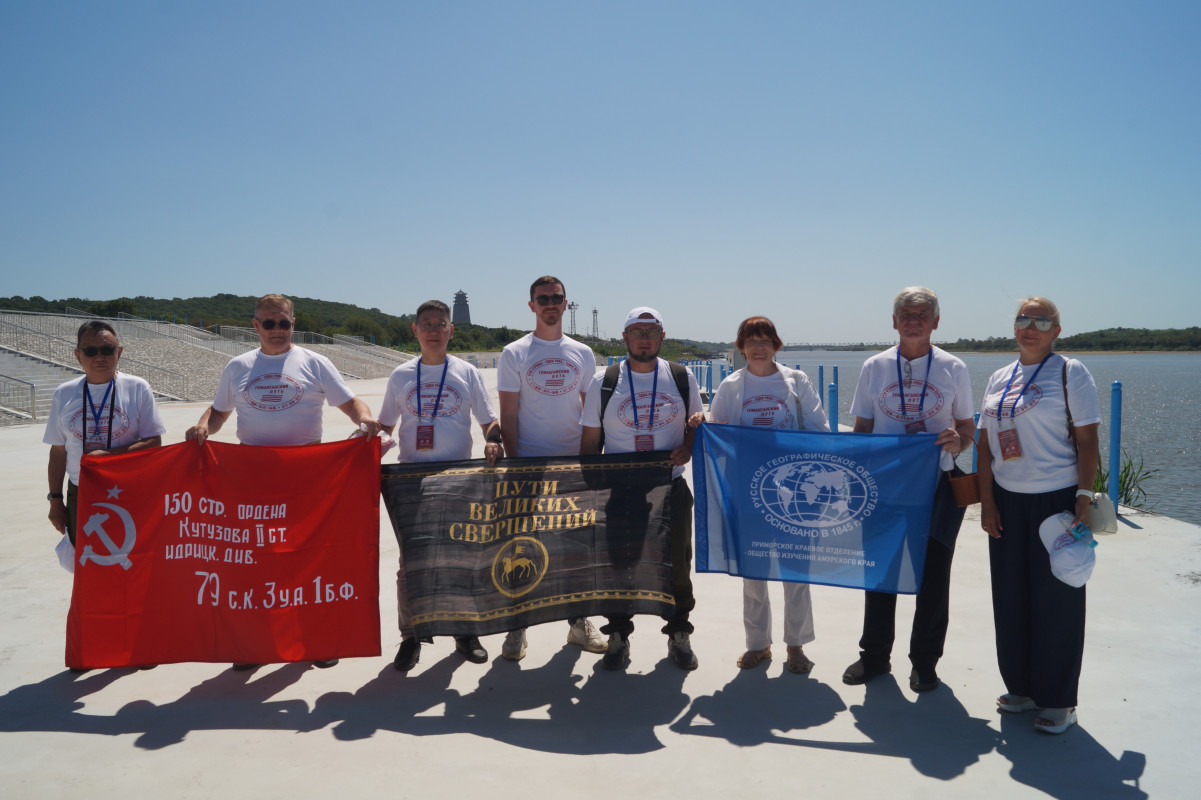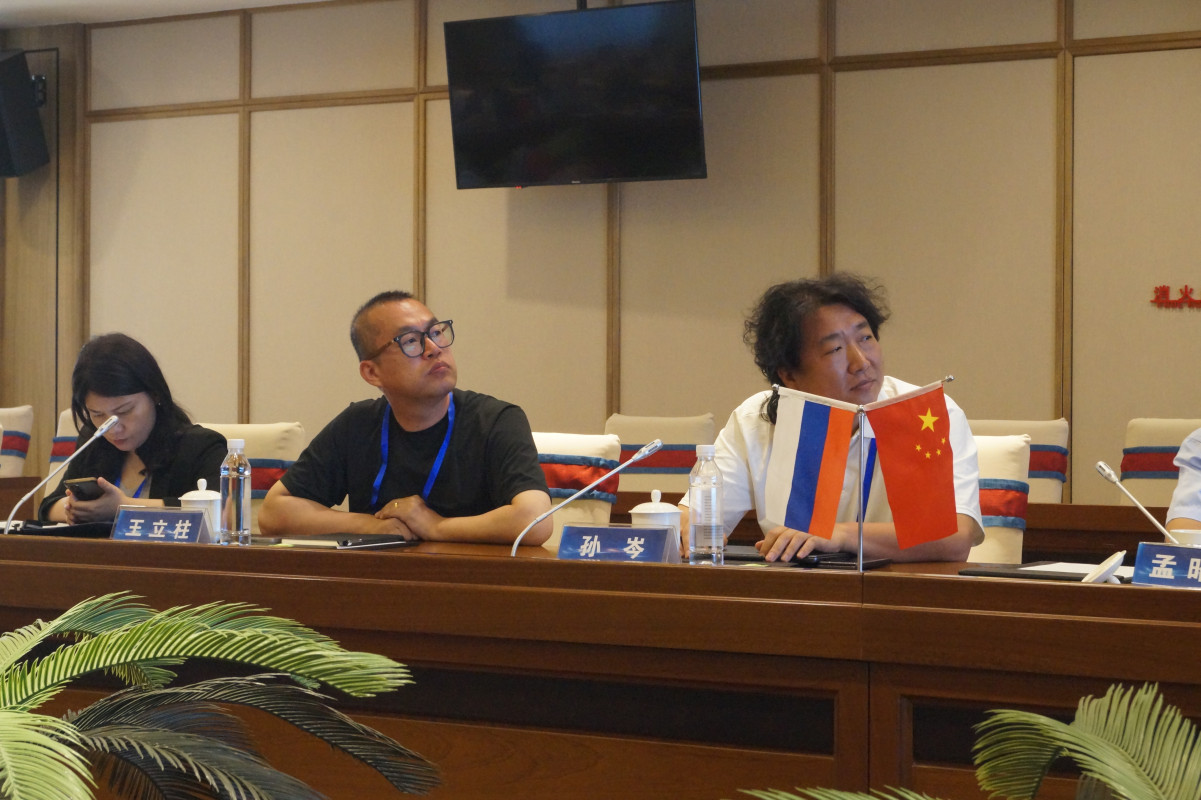The project to explore Russia’s largest waterways «Rivers of the RGS» continued in the Far East as part of a joint expedition with the Geographical Society of China. The participants of the hike studied the ecosystems of the Tumen River (Dumangang) and collected primary data on its tourist and recreational potential.
The river is located at the junction of three borders: Russia, China, and North Korea. Balancing economic development, geopolitical stability, and the preservation of the fragile ecosystem of the delta remains one of the key tasks for all countries bordering Russia along the Tumen River. Exploring the river delta is vital for migrating birds and unique species of flora and fauna. These wetlands regulate the microclimate in a special way, filter the water, protect the shores from erosion, and accumulate carbon.
In 2024, representatives of the Primorye Regional Branch of the RGS and Chinese partners presented the concept of the international project «Red Dumangang». According to it, along the route, a small ship with tourists sets off from the village of Fangchuan, then sails on the Tumen — first in Chinese waters, then along the Russian-North Korean border in Russian waters towards the mouth of the river — and then goes out into the Sea of Japan. There, the vessel turns around and returns upriver to the starting point or enters the seaport of Vladivostok. The project is currently under development.

The Friendship Bridge, which connected the DPRK with the USSR in 1959. The fields of the DPRK in the floodplain of the Tumen River in the foreground; the Russian village of Khasan on the left (in the background) bank of the river. The white tower on the left is on Chinese territory. Photo: wikipedia.org
The organizers hope that such a concept will help people preserve the historical memory of the events of World War II in the Far East, strengthen international ties, and develop patriotic tourism in the border region.
«Today, one of our key tasks is to preserve the memory of the soldiers who gave their lives for freedom and independence,» said Aleksey Buyakov, Chairman of the Primorye Regional Branch of the RGS. «This September, Russia and China will celebrate the 80th anniversary of the Victory. A meeting of the leaders of our states will be held in Beijing. On the eve of this meeting, our delegation walked the 'Red Dumangang’ memorial route to pay tribute to the memory of the Soviet defenders who died on Chinese soil and lay wreaths at their monuments.»
The 2025 expedition followed the land route: Vladivostok — Kraskino — Hunchun — Fangchuan — the coastal strip of the Tumen River — Fangchuan — Hunchun — Kraskino — Vladivostok. Its participants explored the lower reaches of the river, collected data for a detailed study of the tourist route. The specialists visited memorial complexes and mass graves of Soviet soldiers in the Chinese city of Tumen, and an ethno-village in the city of Fangchuan. On August 15, 1945, the Il-4 combat crew under the command of Hero of the Soviet Union Aleksey Oksengendler was killed at the mouth of the Tumen River.

Near the Tumen River. Photo: Olga Kuskova
«Respecting such monuments is our responsibility to future generations and striving for peace,» said Nan Ying, professor at Yanbian University and director of the Remote Sensing Information Center. «The Dumangang River not only geographically connects our countries, but also preserves a common history. Our goal is to create cross-border routes that combine culture and tourism for the sake of global peace.»
The expedition members intend to continue working on the Tumen River in 2026. Experts plan to search for dead Soviet soldiers and develop routes for future travelers.
«The main goal of the 'Rivers of the RGS’ project, launched this year, is to understand how to use the potential of rivers in more than ten regions of Russia for the economy and tourism without harming ecosystems,» said Natalya Belyakova, Director of the Expeditionary and Tourism Development Department of the RGS. «The priority is to analyze highly vulnerable water systems: the basins of the Kama, Volga, Manych, Lena and other waterways of the country that are actively used industrially, from water supply to energy and transport needs. Currently, their recreational potential, which is directly related to the ecological stability of water basins, has not been fully realized. The Tumen River is relatively modest in length and volume of drainage, but its role cannot be underestimated geopolitically. Border rivers are rarely considered from the perspective of tourism, and the interstate work of RGS specialists in Primorye is an important element of Russian-Chinese cooperation.»

During the expedition, meetings were held with Chinese partners. Photo: Olga Kuskova
The project is being carried out with the participation of representatives of the authorities of the Republic of Sakha (Yakutia), the Primorye Regional Union of the Tourism Industry, the Ministry of Tourism of Primorye Territory, the «Primpoisk» public movement, representatives of the Geographical Society of China, Yanbian University, Changchun Institute of Geographic Sciences of the Chinese Academy of Sciences, the Second Institute of Oceanology of the Ministry of Natural Resources of the People’s Republic of China, Northeast Normal University.
Maria Buldakova



